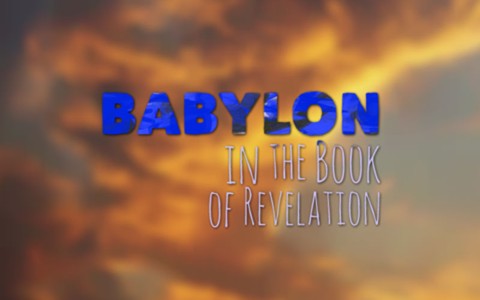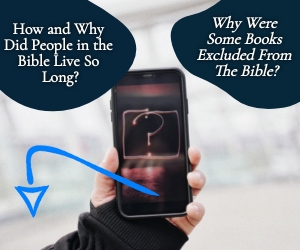Anyone who has watched the news about the Iraq war knows that the city of Babylon is in Iraq. What many do not know is that Saddam Hussein, the deposed President of Iraq, thought himself to be a reincarnation of the Biblical King of Babylon, Nebuchadnezzar. His belief led him to spend untold amounts of money restoring the ancient city complete with the installation of his image alongside the ancient king in stone, art, and coins. Despite the end of Saddam Hussein’s exploits to fulfill his desire to rule like Nebuchadnezzar, the city of Babylon continues to exist and serves as a reminder of end times to come. For this reason we will conduct a micro study of Babylon from the book of Revelation.
What is Babylon?
The first mention of anything related to Babylon is found in Genesis 10:6-9 with the mention of Nimrod, a great-grandson of Noah. Nimrod was the first king of Babylon, yet it had not been named so yet. In Genesis 11 we learn about a time when everyone on the earth spoke one language. In an area that is in present day Iraq, people gathered together with the idea of building a tower to heaven so that they could make a name for themselves. The Lord decided that it was not of His liking that man had taken it upon himself to do this to gain popularity. Therefore, because of their idolatry, He scattered them across the earth and gave them separate languages so they could not understand each other. Because of their inability to understand each other, the place was called Babel, which was later renamed Babylon. This name gave rise to the word “baby” that we have today because babies babble and no one can understand them before they learn to talk.
How does Babylon fit into prophecy?
Despite God’s direct intervention, Babylon eventually grew to be a wonder of the world in architecture, agriculture, commerce, and idolatry. Eventually, a king, Nebuchadnezzar, ruled Babylon. He was directly responsible for the sacking of Jerusalem and the carrying away of the Jews (Jeremiah, Daniel, etc.) there into captivity at Babylon. Through a series of events too numerous to list here, Babylon came to be defined as what is called a double reference prophecy. This refers to a literal fulfillment of prophecy in the events that took place in Babylon as well as these events representing a later prophecy of the world on a larger scale. It is this latter prophecy that is fulfilled in the book of Revelation.
For the record, Babylon is mentioned by name only six times in the Book of Revelation: Revelation 14:8; Revelation 16:19; Revelation 17:5; Revelation 18:2; Revelation 18:10; and Revelation 18:21. However, a large portion of the book of Revelation addresses the events that will unfold in the fulfillment of the Babylonian prophecy.
Babylon in Revelation 14:6-11
Babylon is mentioned in the context of three messages given to the world by three angels. The first angel announces the everlasting gospel and the hour of judgement that has now come upon the world (verses 6-7). The second angel announces the future fall of Babylon (verse 8). The third angel announces the sentence of God’s wrath upon those that worship the beast and his image (verses 9-11).
Babylon in Revelation 16:17-21
Babylon now becomes the subject of God’s wrath right after the completion of seven bowl judgements that were poured out upon the earth. The seventh bowl judgement begins with a great voice from out of the temple of heaven from the throne saying, “It is done.” The earth responds with a great earthquake and hail made of stone, falling upon men as has never been seen before (Worse than that of Egypt in Exodus 9:22-26). The great cities of the world fall and the prophecies of Babylon are about to be fulfilled.
Babylon in Revelation 17
Babylon is now front and center and proclaimed to be the literal and prophetic representation of the Anti-Christ’s one-world religious system that is described as “Mystery, Babylon the Great, the mother of harlots and abominations of the earth” (Revelation 17:5). Like Sodom and Gomorrah, Babylon is about to be destroyed by God (Isaiah 13:19). Throughout the chapter, Babylon is put on display as the epitome of religious idolatry that goes all the way back to the Tower of Babel as described in numerous Old Testament passages such as Jeremiah 44 and Ezekiel 8. The chapter concludes with 10 kings following the Anti-Christ into battle at Armageddon when Christ returns at His second coming.
Babylon in Revelation 18
Babylon is now front and center and proclaimed to be the literal prophetical representation of the Anti-Christ’s one-world economic system (Revelation 18:1-3). Like Sodom and Gomorrah (Genesis 18:20-21), the sins of Babylon have reached God in heaven (Revelation 18:4-5). Because of great wealth, people take refuge in their riches as their savior, seeing no need for God. Therefore, God utterly destroys the Babylonian economy of the world to the disdain of the world’s financial kings (Revelation 18:7-24):
“And a mighty angel took up a stone like a great millstone, and cast it into the sea, saying, Thus with violence shall that great city Babylon be thrown down, and shall be found no more at all.” (Revelation 18:21).
With this great fall, the prophecy of Babylon is fulfilled and the city ceases to exist and the stage is set for the second coming of Christ (Revelation 19).
Conclusion
Babylon is a literal city and has existed for several thousand years. The early history and events of Babylon serve as a double reference prophecy for events of the past and events of the future. Babylon represents both the one-world religious system and one-world economic system of the Anti-Christ that will rise up in the end times prior to the second coming of Christ. Both the religious and economic one-world system will be the focus of man’s worship and adoration as the end times near. Babylon’s one-world systems will be destroyed just prior to the second coming of Christ.
Related reading for you: What Does the Bible Say About Babylon?
Resources – Scripture quotations are from The Holy Bible, King James Version









 Welcome to What Christians Want To Know! The mission of this site is to equip, encourage, and energize Christians. Look for regular updates including Bible Verses, Bible Stories, Christian Quotes, Christian Answers, and much more. Find out
Welcome to What Christians Want To Know! The mission of this site is to equip, encourage, and energize Christians. Look for regular updates including Bible Verses, Bible Stories, Christian Quotes, Christian Answers, and much more. Find out 









